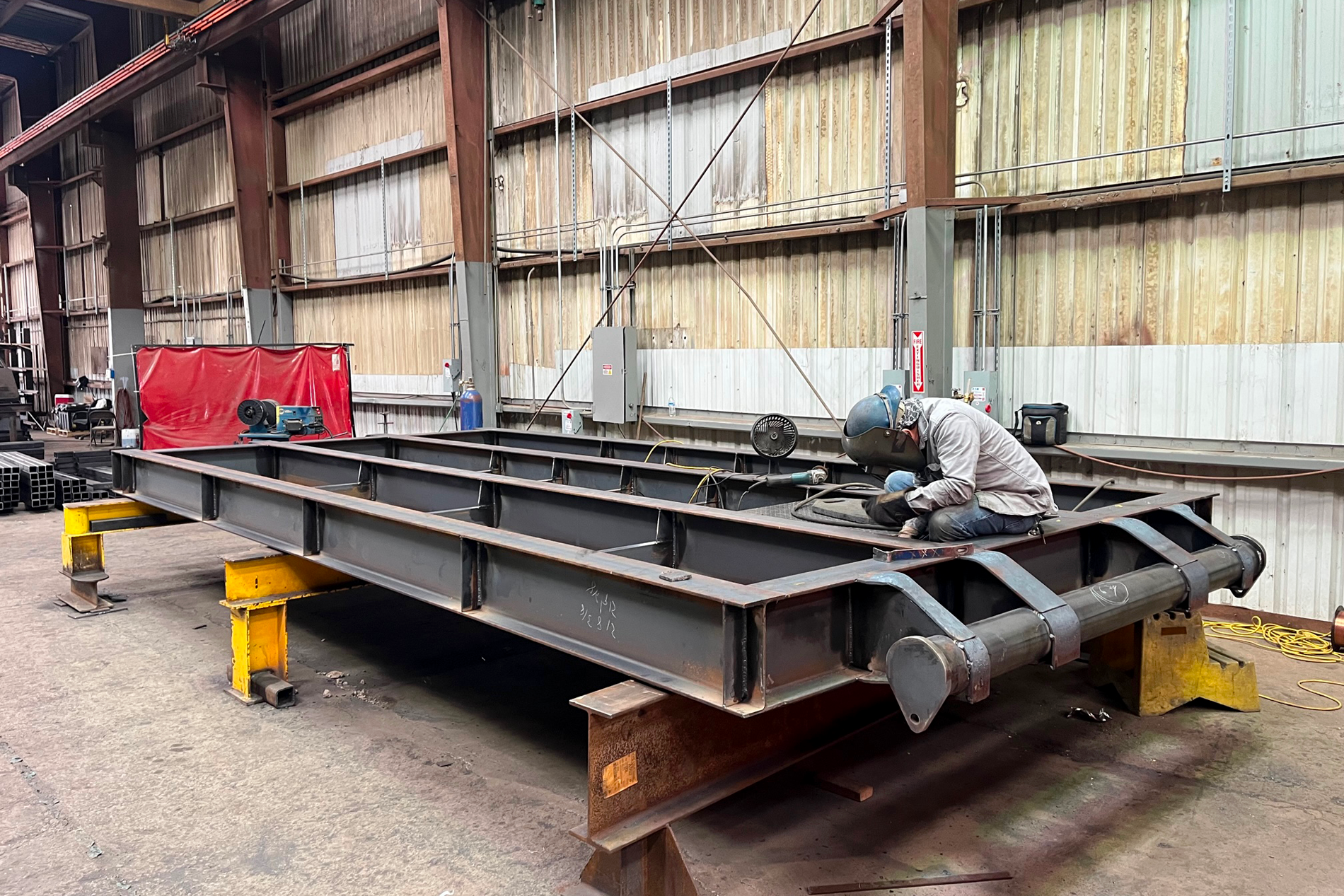OILFIELD SKID FABRICATION

Service Overview
Oilfield skid fabrication includes the construction, and assembly of skid-mounted equipment used in the oil and gas industry. Skids are structural frameworks or bases onto which various components, such as pumps, compressors, generators, separators, and control systems, are mounted. These skid-mounted units are designed for easy transportation, installation, and integration into oil and gas production facilities, drilling rigs, or processing plants.
Oilfield skid fabrication involves the construction of skids, which are structural frameworks used in the oil and gas industry to support heavy equipment and components such as compressors, pumps, generators, and processing units. Skids are essential for facilitating the transportation, installation, and operation of equipment at oil and gas production sites, refineries, and processing facilities.
Oilfield Skid Application Process Overview
The fabrication process typically begins with the engineering phase, where engineers create detailed drawings and specifications for the skid based on the requirements of the equipment it will support and the operational conditions of the oilfield. This phase may involve structural analysis, stress calculations, and compliance with industry standards and regulations.
Once the engineering is finalized, appropriate materials are selected based on factors such as strength, corrosion resistance, and weight. Common materials used in skid fabrication include carbon steel, stainless steel, and aluminum. The materials must meet the required mechanical properties and performance criteria.
The fabrication process involves cutting, shaping, and welding the selected materials to build the structural components of the skid according to the engineering drawings. Skilled welders and fabricators use various techniques such as shielded metal arc welding (SMAW), gas metal arc welding (GMAW), and flux-cored arc welding (FCAW) to join the components together.
Once the individual components are fabricated, they are assembled into the final skid structure. This may include attaching mounting brackets, platforms, access ladders, and other accessories as required by the specifications.
Throughout the fabrication process, quality control measures are implemented to ensure that the skid meets specified tolerances, dimensional accuracy, and weld quality standards. Non-destructive testing (NDT) techniques such as ultrasonic testing (UT), magnetic particle testing (MT), and dye penetrant testing (PT) may be used to inspect welds and detect any defects.
After fabrication and inspection, the skid may undergo surface preparation and coating to protect it from corrosion and environmental damage. This may involve abrasive blasting to remove scale and rust, followed by the application of protective coatings such as epoxy paint or hot-dip galvanizing.
Once the skid is completed and inspected, it is transported to the oilfield site for installation. Skids are typically designed to be modular and transportable, allowing for easy handling and assembly on-site. Proper installation procedures are followed to ensure stability, alignment, and safety.
